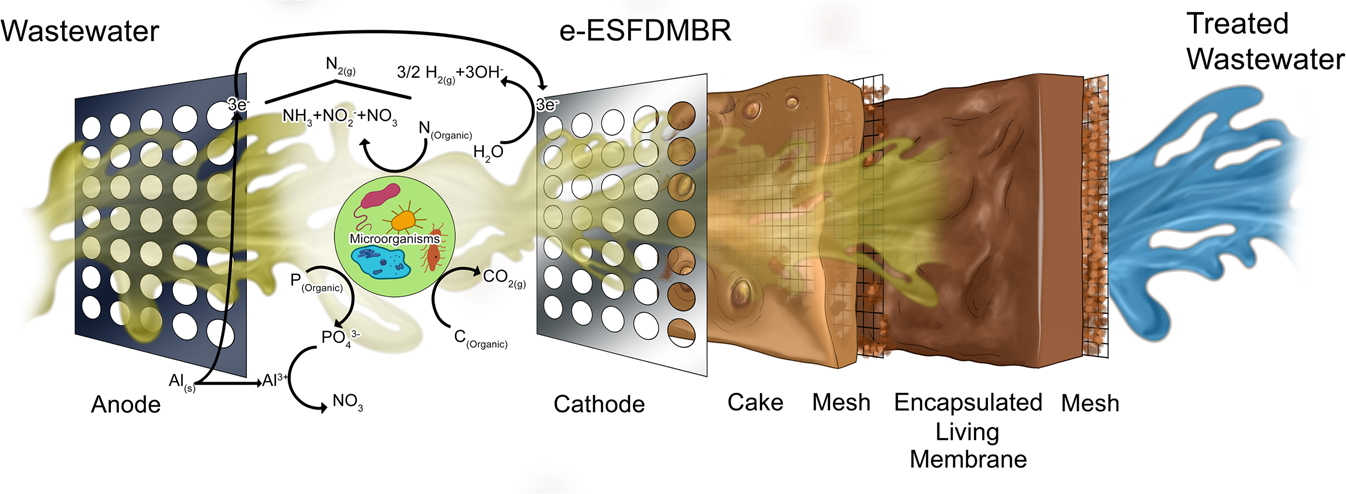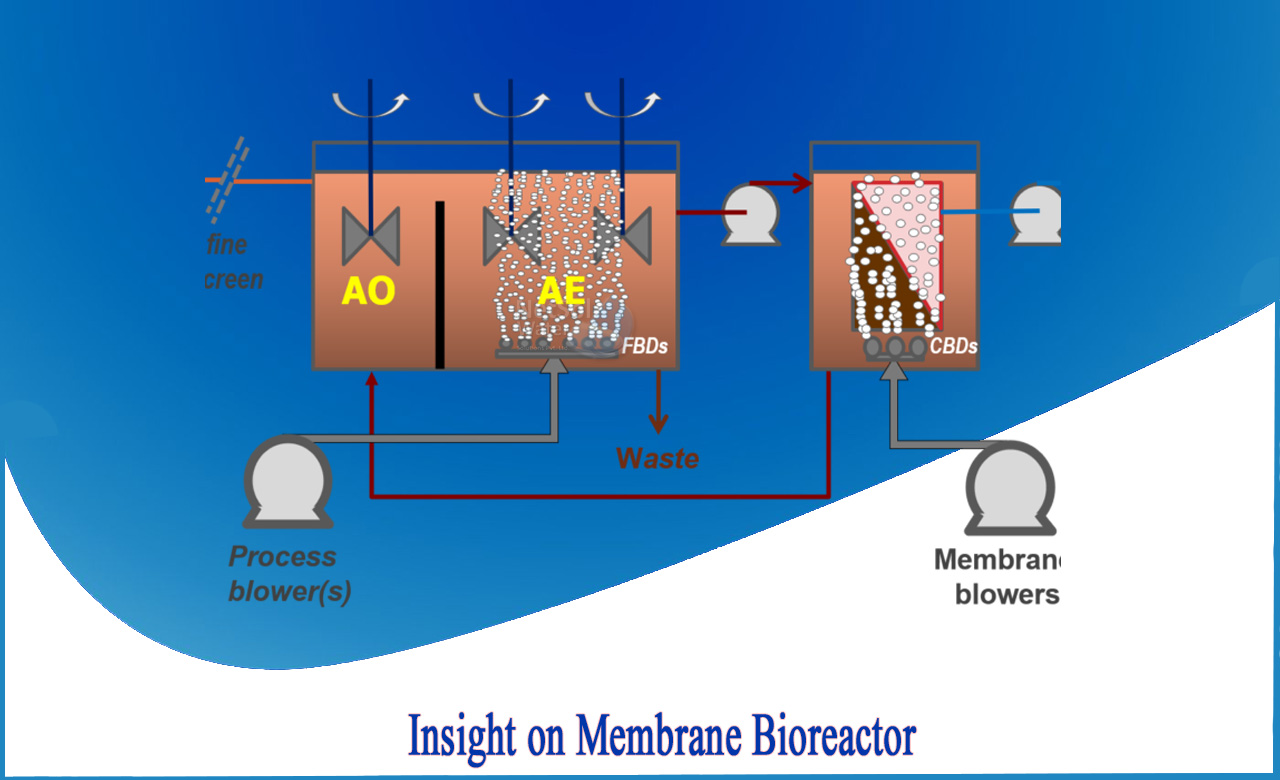Membrane Bioreactor as a Sustainable Solution for High-Volume Wastewater Treatment
Membrane Bioreactor as a Sustainable Solution for High-Volume Wastewater Treatment
Blog Article
Just How Membrane Layer Bioreactors Are Revolutionizing Water Purification Solutions
The appearance of membrane bioreactors (MBRs) stands for a considerable advancement in the area of water purification, combining biological therapy procedures with advanced membrane layer filtering modern technologies. As worldwide water deficiency heightens, the role of MBRs in assisting in potable water reuse and sustainable water monitoring becomes progressively crucial.
Introduction of Membrane Bioreactors
Membrane bioreactors (MBRs) stand for a substantial development in water filtration modern technology, as they combine organic therapy procedures with membrane filtering. This assimilation enhances the efficiency of wastewater treatment by making use of microbes to degrade organic contaminants while simultaneously employing semi-permeable membranes to separate cured water from put on hold pathogens and solids.
The MBR system generally is composed of an organic activator where the microbial populace metabolizes impurities, adhered to by a membrane layer purification device that retains biomass and allows only clean water to pass through. This dual functionality results in higher effluent quality compared to standard therapy approaches. MBRs can be run in both set and constant circulation modes, providing versatility in design and application.
They also make it possible for the healing of water for reuse, thus adding to water sustainability efforts. Overall, MBRs are at the leading edge of improving water therapy efficiency and top quality, showcasing the potential for cutting-edge services in ecological management.
Benefits of MBR Technology
The combination of biological treatment with membrane layer filtration supplies various benefits for water filtration processes. Among the key benefits of Membrane layer Bioreactor (MBR) technology is its capability to properly eliminate both inorganic and natural impurities, resulting in high-grade effluent. The membranes function as a physical obstacle, avoiding put on hold solids and virus from passing through, which improves the general safety and security and reliability of treated water.
Furthermore, MBR systems call for a smaller sized footprint contrasted to standard treatment methods, permitting for extra reliable space usage. This small style is especially useful in city setups where land is restricted. MBRs also show operational flexibility, fitting varying influent high qualities and flow rates without considerable performance degradation.
Additionally, the process provides improved nutrient removal capabilities, particularly for nitrogen and phosphorus, which are vital for stopping eutrophication in getting waters. The decreased sludge production connected with MBR technology also translates to decrease disposal prices, making it a cost-effective remedy in the future - Membrane Bioreactor. On the whole, the benefits of MBR technology position it as a leading selection for cutting-edge and sustainable water purification systems, dealing with both ecological and financial issues
Applications in Water Filtration
Applications of Membrane Layer Bioreactor (MBR) technology in water filtration are impactful and diverse, resolving different treatment requires across numerous industries. MBRs effectively incorporate biological therapy processes with membrane layer filtering, making them ideal for local wastewater treatment, commercial effluent management, and also potable water reuse campaigns.
In metropolitan settings, MBRs are progressively utilized to improve the top quality of dealt with wastewater, allowing for compliance with rigid discharge policies and facilitating the recycling of water for watering and non-potable uses. Their compact layout also makes them suitable for urban atmospheres where space is limited.
Industrially, MBR technology is utilized to treat process water and wastewater, particularly in industries such as food and beverage, pharmaceuticals, and textiles. By efficiently eliminating contaminants and suspended solids, MBRs help industries minimize ecological influences while recouping useful resources from wastewater streams.
Furthermore, MBRs are acquiring traction in decentralized water therapy applications, where small systems can be deployed in remote locations or creating regions. This adaptability makes it possible for areas to accomplish sustainable water monitoring options, improving access to tidy water while minimizing reliance on traditional therapy techniques.
Case Researches and Success Stories

In another instance, a textile production facility in Bangladesh embraced MBR technology to resolve its wastewater challenges. The system minimized chemical oxygen demand (COD) degrees from 1,200 mg/L to much less than 100 mg/L, therefore fulfilling regulative criteria and substantially reducing ecological influence.
The University of Cape Community's MBR installation has actually proven efficient in dealing with greywater for non-potable reuse on school. This task not only saves safe and clean water however additionally functions as an academic version for sustainable methods.
Additionally, a seafood processing plant in Norway made use of MBR technology to treat effluents having high levels of organic issue, attaining over 90% pollutant removal. These instance researches underscore MBR innovation's convenience and its vital function in improving water top quality throughout diverse applications.
Future of Water Treatment Solutions
As worldwide water shortage and air pollution obstacles magnify, ingenious water therapy options are coming to be increasingly important to make sure lasting accessibility to tidy water. The future of water therapy depends on the assimilation of innovative modern technologies that enhance the efficiency and effectiveness of purification processes. Membrane layer bioreactors (MBRs) go to the center of this advancement, incorporating organic therapy with membrane layer purification to create top notch effluent ideal for numerous applications.

Arising fads such as source healing from wastewater, including nutrients and power, will certainly additionally transform treatment centers right into environment-friendly hubs. Furthermore, advancements in nanotechnology and membrane layer products promise improved efficiency and durability of filtration systems.

Final Thought
Their role in drinkable water reuse and lasting water monitoring highlights their importance in attending to international water deficiency challenges. Continued research study and growth will certainly further enhance the effectiveness and fostering of MBR modern technology, making certain a resilient future for water treatment services.
The introduction of membrane layer bioreactors (MBRs) stands for a substantial advancement in the field of water purification, merging biological treatment processes with advanced membrane filtration innovations. As worldwide water shortage increases, the duty of MBRs in promoting safe and clean water reuse and lasting water monitoring comes to be important site significantly essential. They additionally make it possible for the recuperation of water for reuse, therefore contributing to water sustainability efforts.As global water scarcity and pollution obstacles intensify, cutting-edge water therapy options are ending up being progressively important to guarantee sustainable accessibility to tidy water. Their role in potable water reuse and lasting water administration highlights their significance in dealing with global water deficiency difficulties.
Report this page